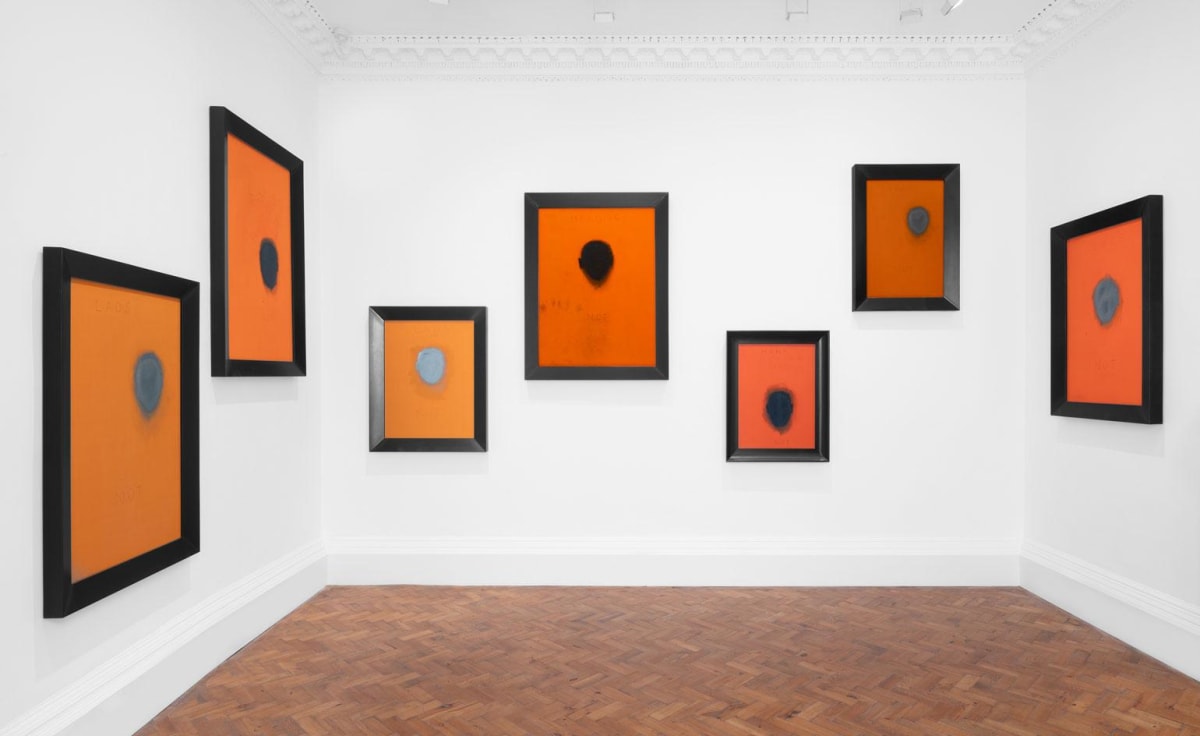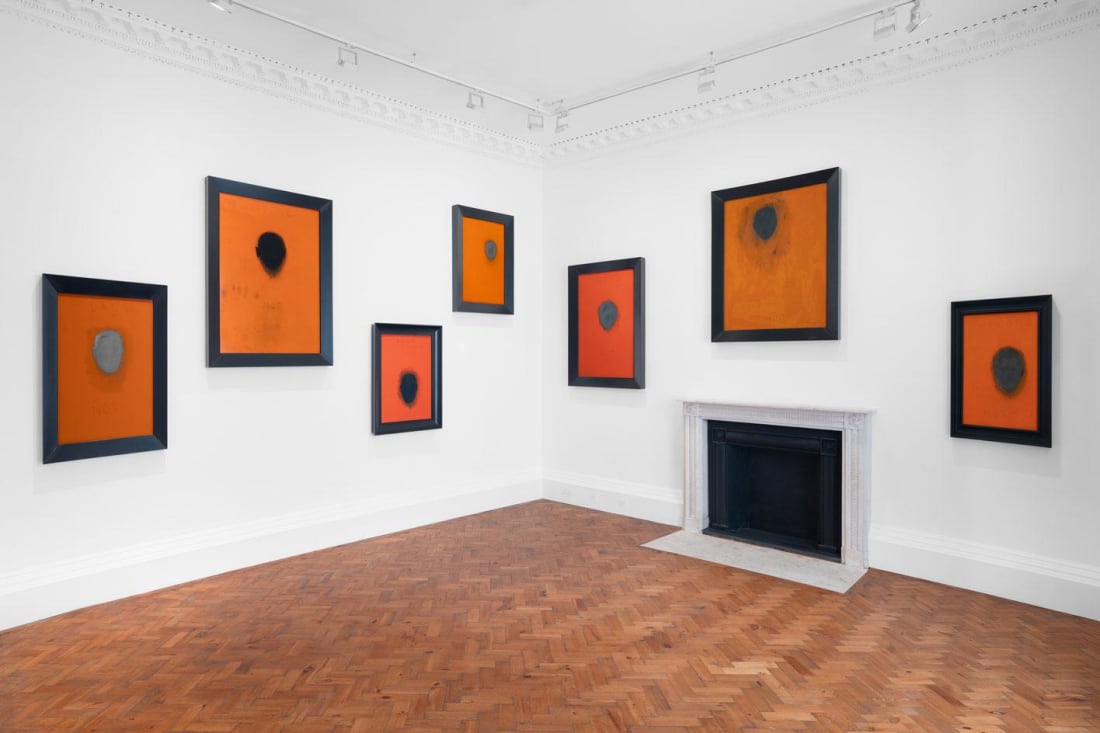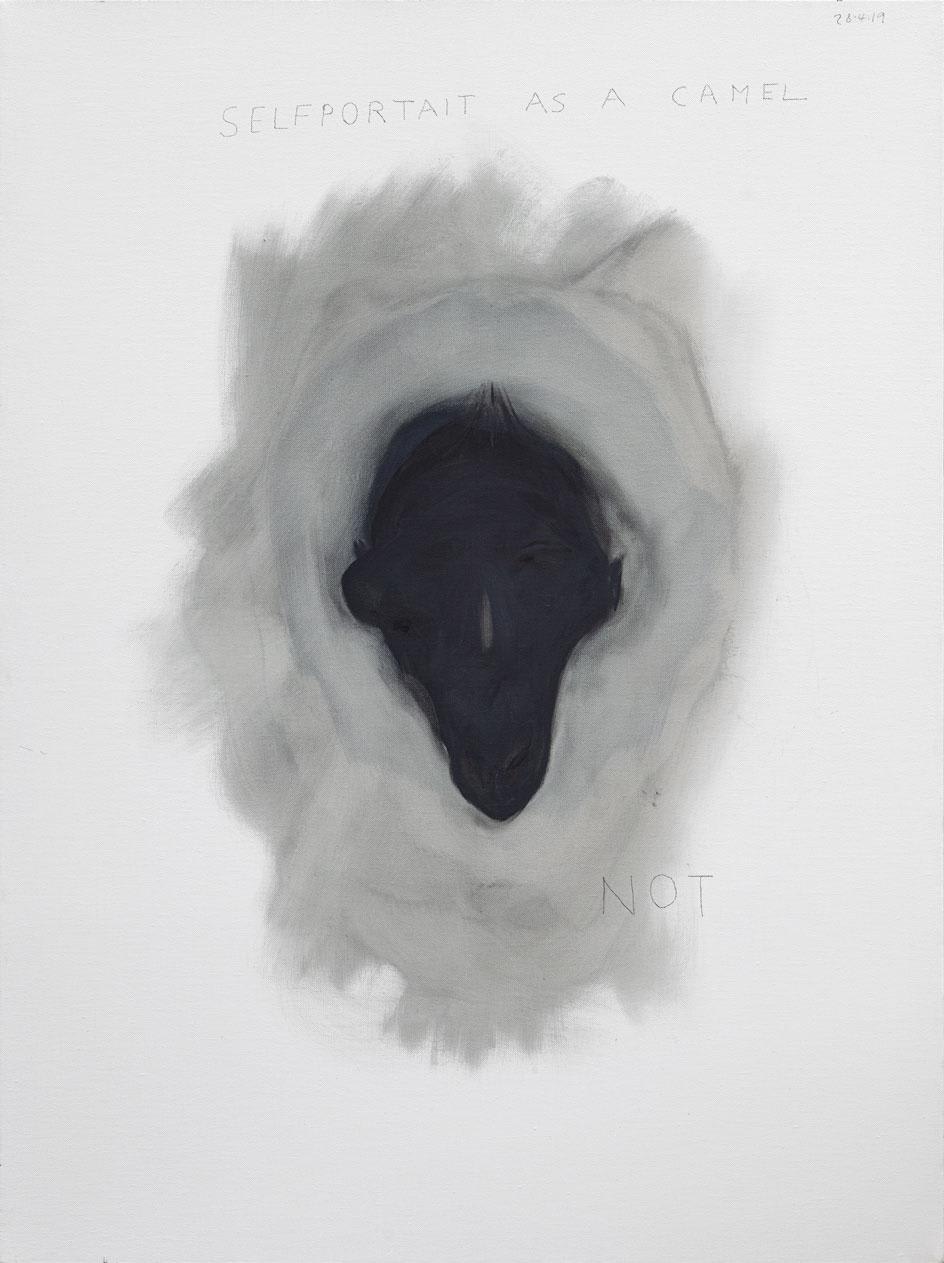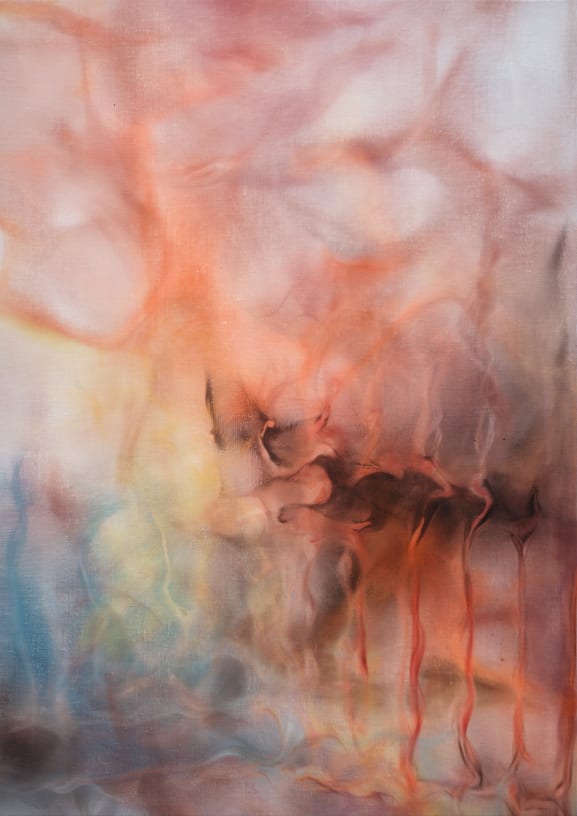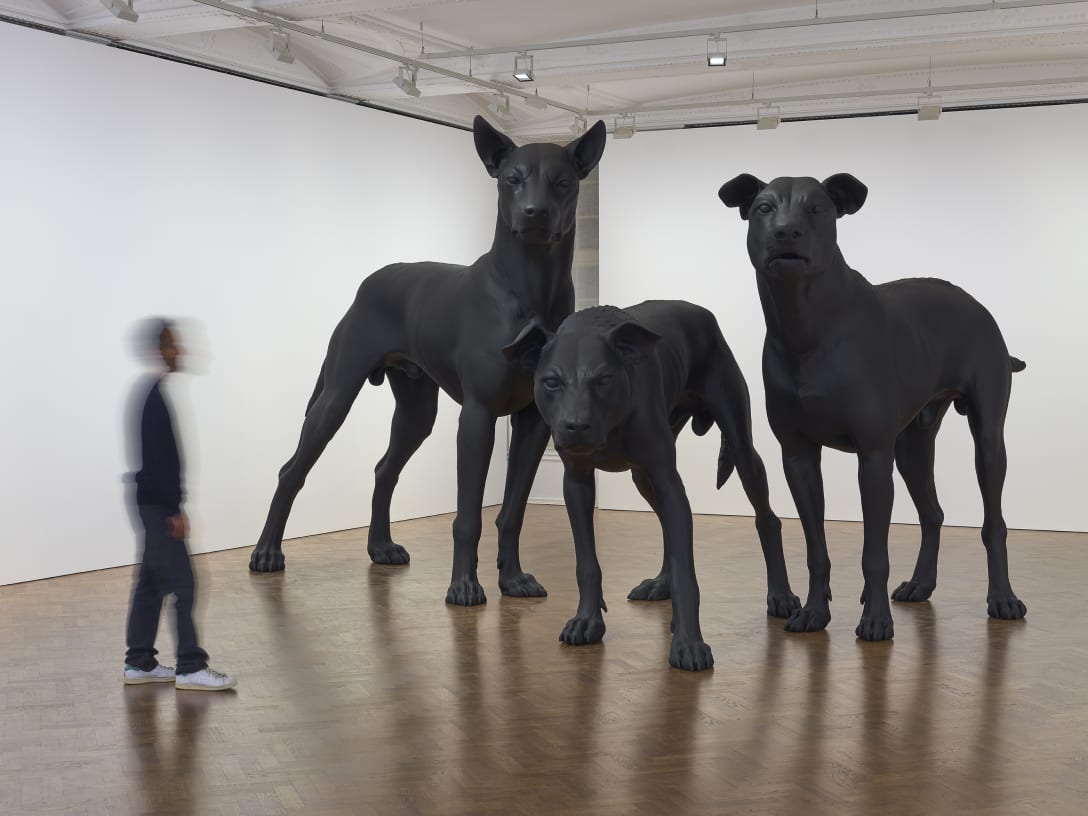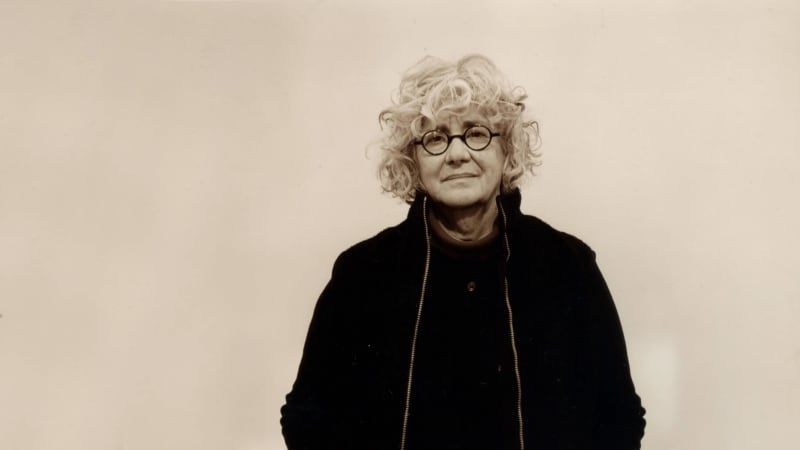Not Vital in conversation with Hans Ulrich Obrist . (This link opens in a new tab).
Speaking to Hans Ulrich Obrist ahead of a solo show at Thaddaeus Ropac, London, artist Not Vital describes his youth in the bucolic Engadin Valley, his performative self-portraiture, and the freedom of not being an architect
In London, a new show at Thaddaeus Ropac homes in on one of the many facets of Not Vital’s practice: painting. (This link opens in a new tab).. Deeply personal, these intimate and ethereal works present tensions between abstraction and figuration, light and dark, essence and representation.
To mark the occasion, Swiss art curator, critic and art historian Hans Ulrich Obrist – a longtime friend of the artist – spoke to Vital about the foundations of his practice, from a childhood spent in the bucolic Engadin Valley to his nomadic travels across Europe, America and Asia.
Vital recalls his street circus in Rome; a preoccupation with buildings that began when he was aged two and resulted in ‘Scarch’ – a term coined to describe his distinct blend of architecture and sculpture. (This link opens in a new tab).; and his eclectic influences, from Giacometti, Rothko and Bacon to Nietzsche’s moustache and his local Engadin butcher.
Hans Ulrich Obrist: I’m curious to know how it all began. For me, it was seeing the Giacometti collection at the Kunsthaus in Zurich when I was 12. That was the beginning of my obsession with art.
Not Vital: I was living here in Sent, in the Engadin Valley and would frequently visit Max Huggler. That was my introduction to art.
HUO: Max Huggler was a pioneering collector and museum director in Switzerland. Were there specific works in his collection that you remember?
NV: Yes, Huggler had a great painting. (This link opens in a new tab). by Kurt Schwitters titled Ausgerenkte Kräfte (Dislocated Forces), which had a lasting impact on me. Most of Huggler’s paintings were on canvas and as a child, I didn’t understand why. Huggler said, ‘I have this phenomenal painting. (This link opens in a new tab). by Kurt Schwitters on wood.’ From then on, I understood that painting. (This link opens in a new tab). doesn’t have to be on canvas. When I came back from seeing Huggler, workers were mounting a new roof on my parents’ house. I noticed a drainpipe on the floor, I picked it up, and painted it white. This became my first work: Chanala da tet (1964). Last year, it was shown at Hauser & Wirth in Somerset. (This link opens in a new tab)..
HUO: Today we’re going to talk mostly about the paintings, the portraits and self-portraits. There are early photographs that are kind of self-portraits but more performative.
NV: I live close to the intersection of the Swiss, Austrian and Italian borders – the Dreiländereck (three-country corner). At the time, my idea was to erase these borders. For Treriksröset (Dreiländereck) (1970) I brought ashes to the point where the three countries meet and threw the ashes along the borders. For Being in the Shadow of a Tree (1970), I stood in the shadow of a tree for a whole afternoon, constantly adjusting my position to the shadow. This was kind of a performative and durational self-portrait. But I didn’t start painting. (This link opens in a new tab). until I went to Paris in April 1968.
HUO: I was born in May 1968!
NV: Were you? [Laughs] That’s a fantastic time to be born! So you can imagine the tension at the time.
HUO: So in Paris you began to paint?
NV: I remember we had a painting. (This link opens in a new tab). class with a model, but that didn’t last long, because it was considered passé and too apolitical. At the time, the civil unrest was at the centre of everybody’s attention. I didn’t paint much in Paris, and after that, I gave up on painting. (This link opens in a new tab). for a long time.
HUO: Paris was the first of multiple exiles for you. After Paris you went to Italy, then New York and then you added more places.
NV: Coming from Switzerland, I wasn’t really accepted in the May 68 movement because I was from a country that didn’t have a Communist Party. It was a very political time. But I didn’t stay in Paris for long, I went to Rome, where I had a circus.
HUO: Can you tell me more about your circus?
NV: I assembled a few friends and we did performances in places that were kind of dangerous, like the Gianicolo, where there’s a very sharp curve that the traffic would come down. I wanted the traffic to see the circus, to somehow be involved. There sometimes were accidents, and we were often arrested by the police. The animals that I had were very small because I had to keep them in my apartment. I had small real ducks and a big metal duck that I could wind up. When the fake duck would walk, the real ducks would follow it. Rome was a great place. But then I went to New York. It was just the right moment to be there.
HUO: And that’s when you began to work more with sculpture. (This link opens in a new tab).. You worked a lot with portraiture in the sculptures, initially not with humans, but with animals.
NV: Growing up in an Engadin house, animals played an important role. They were kept in the house because they would heat it up with their body temperature. There was also the ritual of the hunt, a very important occupation for the men. It is probably because of this proximity to animals that I chose to work with them.
HUO: Often it’s a fragmented portrait. How did that begin?
NV: What impressed me as a child here was the butcher who would come to the neighbour’s house in the morning, and drag out the animal, let’s say a pig, and then cut off its head. There was this element of cruelty, but I was curious to know what was inside the animal and how the butcher made sausages from this pig. It was perhaps the reason for using just one part or a few parts of the animal in sculpture. (This link opens in a new tab)..
HUO: This brings us to portraits of people. In your Nietzsche-Haus presentation in 1993, there was a sculpture. (This link opens in a new tab). of Nietzsche’s moustache.
NV: When I first went to the Nietzsche-Haus in Sils Maria [in Switzerland], what impressed me most about the death mask, drawings and photographs of Nietzsche, was this moustache that grew bigger throughout his life. In the end, you couldn’t even see his mouth. That was fascinating: that this moustache would take over his face. So I made a sculpture. (This link opens in a new tab). of his moustache, and placed it in his bed.
HUO: Before 2008, the portraiture was mostly in sculpture. (This link opens in a new tab)., photography, performance, drawing. Then, at the Ullens Centre for Contemporary Art, Beijing, in 2011, the painted portraits were shown for the first time.
NV: After 2000, I gave up my New York studio, because I felt New York was over once artists had to move away from the city. In the 1980s, we never even went to Brooklyn, but suddenly the city had changed and everything became expensive. I went to Beijing, where you had space and there were lots of artists coming to the city. I got this place in Caochangdi, and an assistant from Japan, Mitsunori Sano, who was an architect, designed my studio. I immediately felt at home, working there in this new environment with professional assistants and a completely different work ethic. In China, you work from seven to seven without talking. So that was kind of contagious. One day, in 2008, I went to the art store with Li Gao, one of my assistants. I bought a canvas, I bought a few paints, and brushes. Then I painted Li Gao. It all happened really fast. I was astonished. Then I started to get very interested in portraiture.
HUO: It’s not surprising that this happened in China, because you’re always surrounded by people.
NV: Exactly. If you go out, there are thousands of people around you. And the first thing you look at is the face. That’s why I started to paint people. But in my portraits, the face is always fully frontal. When people sit for me, it’s very important that they look straight at me. The work on the invitation card for the show in London is called The Fly (2019). Have you seen it?
HUO: There’s a tiny fly on the left, but the protagonist looks straight at you.
NV: Yes. The painting. (This link opens in a new tab). depicts Tian Tian, one of my favourite models. A fly is approaching him from his right, but Tian Tian is not moving. If a fly approaches you, you turn to look at it, right? But he didn’t. And this is exactly what I want, this tension. I once read that the most difficult thing is to make a frontal portrait. But this is the only way I can do it.
HUO: [Gallerist] Alma Zevi writes in the catalogue for the Beijing show ‘Full On’ that in the fully frontal approach, she sees connections to Giacometti. It’s a little bit obvious to talk about Giacometti in relation to your work because of the Engadin connection. But it is interesting to note that Giacometti, a sculptor like you, painted fully frontal portraits.
NV: In a way there are parallels. Our colour asceticism definitely comes from our origins in the same region, where grey is the main colour. But I have a feeling Giacometti paints more like a sculptor. He builds up. It’s very muddy. I build up too, but I also destroy. Of influences, I think more of Rothko. I’m thinking of some of my very dark paintings, like Man with Dark Glasses (2012).
HUO: There’s also Francis Bacon who always put his paintings behind glass, as you do.
NV: Yes. When I paint, I am always aware that the painting. (This link opens in a new tab). is only done, and only comes alive, when it’s behind glass. This is what Bacon said. I like that the glass becomes like a skin. It gives life to the painting. (This link opens in a new tab).. It attracts, but also it inflects and reflects. It keeps you away, gives you the right distance to look at a painting. (This link opens in a new tab)..
HUO: Another link to Bacon is the almost mutilated or dismembered parts. If I think about Straightjacketed (2010), there’s something almost violent.
NV: Yes. In the London show, there is a painting. (This link opens in a new tab). titled Gu Cheng (2010). Gu Cheng was a famous Chinese poet who died in 1993, when he was in his late thirties. He was schizophrenic and he killed his wife and then hanged himself. So yes, Straightjacketed and Gu Cheng both have violence.
HUO: And the self-portraits where you assume these different identities are the opposite of a fixed identity.
NV: I like this possibility of playing someone that I am not. Self-portrait as a Camel (2019), also on view in London, is a good example of this. Having done so many works with camels and camel heads, I just wanted to see how you could put the two together – half man, half animal.
